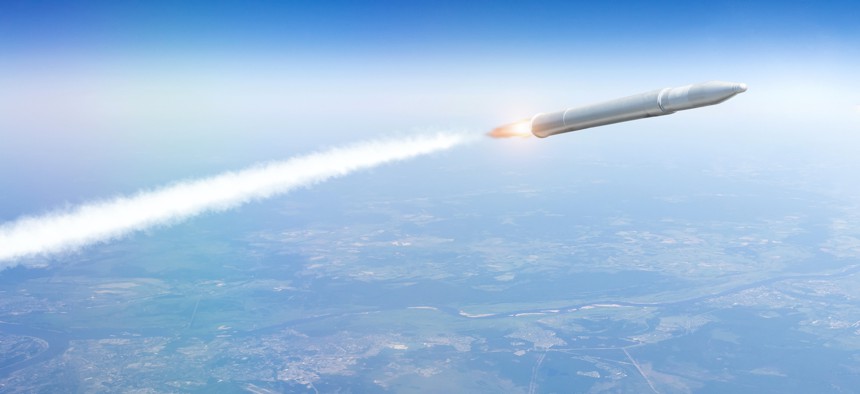Firms Picked to Make Orbiting Sensors for Next-Gen US Missile-Defense System
The sensors and satellites will be part of the Tracking Layer component of the next-gen missile-defense system.
The Pentagon’s Space Development Agency—which will become part of the U.S. Space Force in 2022—selected SpaceX and L3Harris Technologies to produce satellites and sensors that can track and target advanced missile threats from outer space.
Award notices published to the federal procurement site beta.sam.gov Friday afternoon indicate that SpaceX could receive more than $149 million and L3Harris could receive more than $193 million to produce capabilities for the Tracking Layer of SDA’s Tranche 0, Wide Field of View Program.
SDA was created in early 2019 to “define and monitor the [Defense] Department’s future threat-driven space architecture,” then-Defense Secretary Patrick Shanahan wrote in a memo.
News surfaced in early 2020 that the agency would become part of the Space Force in 2022, and the original statement of work connected to the Tracking Layer solicitation, originally launched in May, listed a U.S. Space Force facility in Colorado as a potential location of work on the project.
Through the broader program, SDA aims to implement a robust architecture made up of multiple layers of nearly 1,000 satellites that can provide unique military insights and capabilities such as spotting hypersonic weapons or potentially deterring potentially aggressive actions in cislunar space, or the area within the Moon’s orbit—by 2026.
While this award provides funding to support the tracking layer of satellites through the program, SDA announced it had awarded York Space Systems and Lockheed Martin many millions for what will be the closest layer of satellites to Earth—deemed the transport layer—in August.





